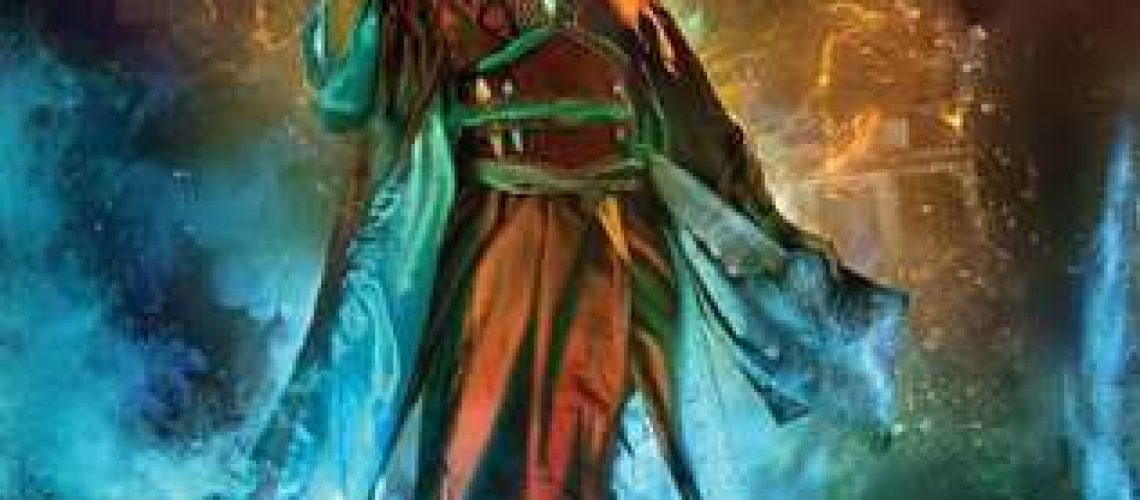In an alternate early 20th-century world where Japan and the US have created a powerful alliance, a secret geomancer struggles to protect herself and the city she loves from forces seeking to shake San Francisco to pieces in Breath of Earth, the first in a new alternate history fantasy series by Beth Cato.
In the alternate world that Cato depicts, there is magic in the world, and the primary form of magic are those magicians who are sensitive to the movements of the earth. These geomancers not only can keep San Francisco tectonically stable, but can channel the bled off energy into a mineral, kermanite, whereupon that energy can be discharged to do work, to power vehicles and other things in the same way that a battery can. Thus, kermanite is an extremely potent strategic resource, and its acquisition and control is part of the reason for the Japan-US alliance. Even better, the novel shows the clear costs and dangers of geomancers. It’s a potent form of magic, but one that can cause not only destruction around the user, but actively be harmful for their health. There are also social costs to being a geomancer, a theme that Cato has explored previously in the Clockwork Dagger series.
 The novel also feels familiar to me as a reader of Cato’s previous series in that it features two recurring elements, things that the author seems intent on exploring. The first is having a strong, focused female character who not only has agency and power, but also has power even beyond what she knows or thinks at first. Both characters also have family backgrounds that are murky, and often have to hide those powers. There is a clear line from Octavia Leander in the Clockwork novels to Ingrid, here in Breath of Earth. Ingrid’s story adds notes and explorations of racism and cultural issues to the sexism that both Ingrid and Octavia deal with in their respective worlds.
The novel also feels familiar to me as a reader of Cato’s previous series in that it features two recurring elements, things that the author seems intent on exploring. The first is having a strong, focused female character who not only has agency and power, but also has power even beyond what she knows or thinks at first. Both characters also have family backgrounds that are murky, and often have to hide those powers. There is a clear line from Octavia Leander in the Clockwork novels to Ingrid, here in Breath of Earth. Ingrid’s story adds notes and explorations of racism and cultural issues to the sexism that both Ingrid and Octavia deal with in their respective worlds.
Like in the Clockwork series, the central focus on her main character works extremely well; Ingrid’s story is thoughtful, and engaging. Trapped in a white man’s world and a white man’s profession, Ingrid’s struggle against racism and sexism is poignant and nuanced. Her own attitudes and feelings toward the Chinese minority in San Francisco, despised by nearly everyone, provide a mirror on our own world, today, and are a bracing look at our past. Beyond such weighty concerns, the novel loads up its airship of a story with loads of breezy and fun and Ingrid’s relentless run down in her mission keeps the novel going and her story and character flying along. I particularly liked the dynamic Ingrid has with her mentor, Sagaguchi; and their relationship, which drives much of the novel, was a highlight of the book.
The other major recurring element in both sets of works is airships. It is now clear to me as a reader that Cato really likes airships. Airships, airships are cool. While the Clockwork series gives us much more extended time on and around airships than, sadly, Breath of Earth does, I was quite pleased and not surprised to learn that this alternate world, as is almost a cliche and marker in alternate histories, featured airships of its own, using the aforementioned mineral to power them.
A couple of things that are mentioned in the background of the history of this world did not work for me. For instance. while the idea of Romans with airships is a very cool idea, I couldn’t quite square that in my head given the state of metal and woodcraft available at the time in our history. And if there were airships, then, even with a lack of kerminite, I think technology in that field would be far more advanced in the early 20th century than it is as depicted in the book.
Aside from that quibble, I found the early 20th-century California and world that Cato depicted to be fascinatingly plausible. I was reminded, although with a more equitable power sharing, of the Japanese-influenced California of the Man in the High Castle series. The excesses of the concept of Manifest Destiny are something that Americans don’t like to really think about. Channeling that into an alliance with Japan to dominate the Pacific felt disturbingly believable to me. Although there are hints here and there in the text, I found myself wondering just what other changes there were in the world beyond those seen, or mentioned.
And yes, the novel takes place in the days before the famous 1906 Earthquake in our own world. If and how the Earthquake will unfold in this timeline is a constant tension throughout the novel, a “doom clock” that, in addition to Ingrid’s story, draws the reader forward through the novel in an engaging way.
Like The Clockwork Dagger, Breath of Earth is an extremely engaging and promising start to a series whose potential I hope will continue and be fulfilled in subsequent volumes in the series.







